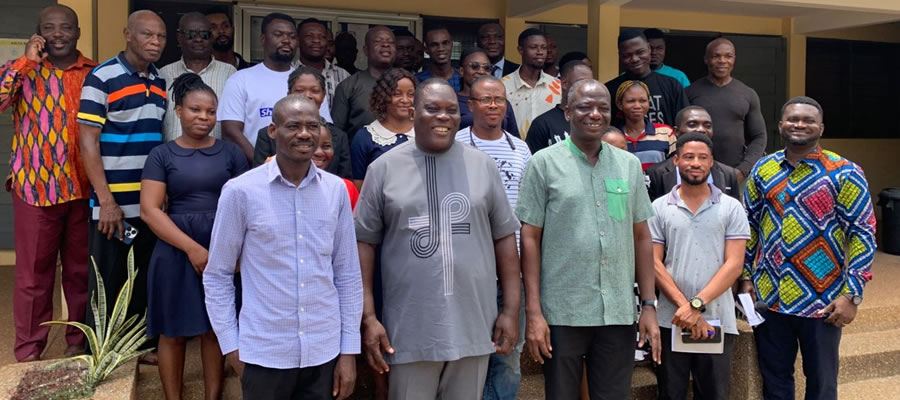

Location and Size
Area
Total land area of about 906,445sq km.
Location
The Municipality is located in the South-Eastern part of the Volta Region. It has a total land area of about 960.445 sq. km. The total land under cultivation is about 51,438.12 hectares. The Municipality is bounded to the south by the Keta Municipal, to the east by the Ketu North Municipal: to the north by North Tongu District to the west, Adaklu District and the Republic of Togo to complete the demarcation of the Akatsi South Municipal.
The Municipality is located between latitude 6° S - 7° North 0° W - 1 ° W.
Topology and drainage
Topography
The topography of the Municipality generally is gently undulating with a general elevation of the land averaging 10-50 meters above sea level, and a peculiar coastal savanna soil, ground water laterite and tropical black earth. The Municipality is a low-lying coastal plain with flatland in the south and rolling plain to the north.
Drainage
About 60% of the total land area lies below 100 feet contour line and rising to cover over 200 feet in the northern parts. Rivers and creeks, such as Tordzi, Agblegoibe, Wowoe Lotor and Kutoe, drain the Akatsi South Municipal. The first three empty their waters into the Keta and Avu lagoons. Some of these are dammed for irrigation during dry season.
Climate and Vegetation
Climate
The elements of importance in the climate of the Municipality are temperature, humidity, rainfall and wind is of significance mainly during the dry season when inflow of the Harmmattan winds accelerated the drying up of the savanna grasses and during the periods of the occasional line squalls.The Municipality falls within the coastal savannah equatorial climatic regime characterized by high temperatures (min: 21° C max: 34.5° C), high relative humidity (85%) and moderate to low rainfall regime (1,084 mm) with distinct wet and dry seasons of about equal lengths.
Vegetation and Fauna
The vegetation of the Municipality is made up of coastal savannah in the south and savannah woodland to the north. The "agoti" (Palm-borasus) palm is found in isolated places in the northwestern parts of the Municipality.The black berry (Velvet tanarid) locally called "atitoeti" is an important economic tree that can be found in most parts of the areas surrounding Akatsi town. In the far northwest, around the Avu lagoon and its creeks are large track of reed locally known as "Keti" and used in weaving mats.
geology and soil
Geology
The Municipality falls within these underlying geological formations. The acidic gneiss belt, forming 70% of the land area. Tertiary Sand -25% and basimorphic acidic gneiss about 5% is recent alluvial material.The acidic belt consists mainly of layered coarse to fine grained muscovite biotite, schists and containing numerous quartz veins. There are outcrops ofnegivine, augite and syenite either as inselberg or shallow exposed surface all over this geological formation.
Soils
Three main soil types characterize the Municipality. The south-eastern portion is characterized by tertiary sands which are moderate to well-drained, deep red to brown loamy sand to sandy loam topsoil over course sandy loam to clay loam sub-soils.These soils are suitable for the cultivation of all arable crops. Within this dominant soil can be found in the valley bottoms and depressions, poorly drained and plastic glecal clays, suitable for commercial sugarcane production as well as for ceramic and pottery industry.
Date Created : 11/29/2017 2:08:18 AM













 facebook
facebook
 twitter
twitter
 Youtube
Youtube
 +233 593 831 280
+233 593 831 280 0800 430 430
0800 430 430 GPS: GE-231-4383
GPS: GE-231-4383 info@ghanadistricts.com
info@ghanadistricts.com Box GP1044, Accra, Ghana
Box GP1044, Accra, Ghana